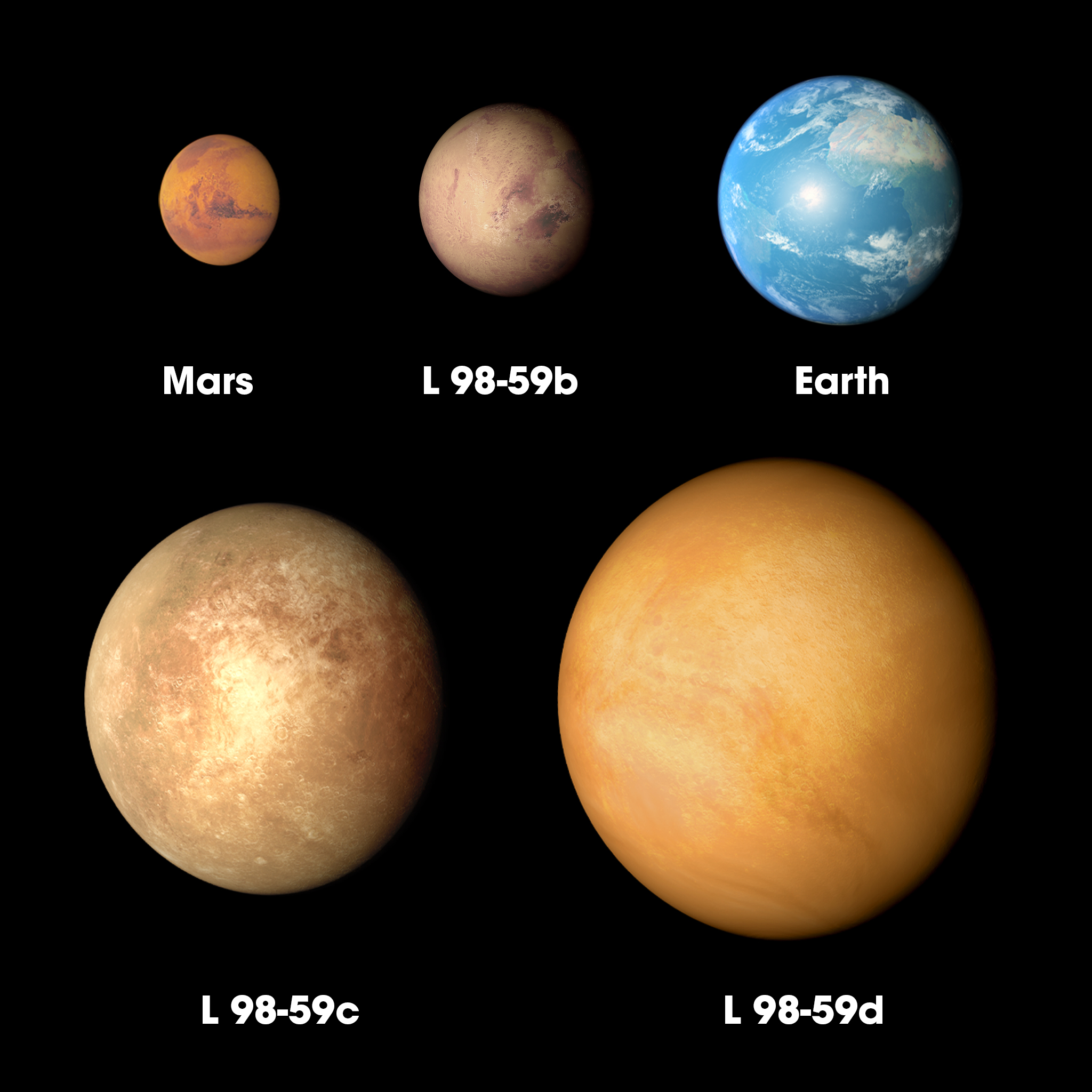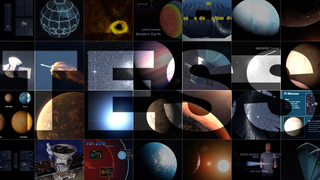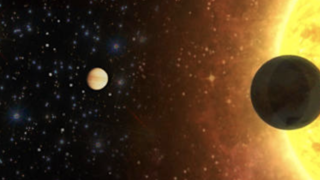Planets and Moons
Universe
ID: 13223
NASA’s Transiting Exoplanet Survey Satellite (TESS) has discovered a world between the sizes of Mars and Earth orbiting a bright, cool, nearby star. The planet, called L 98-59b, marks the smallest found by TESS yet.
Two other worlds orbit the same star. While all three planets’ sizes are known, further study with other telescopes will be needed to determine if they have atmospheres and, if so, which gases are present. The L 98-59 worlds nearly double the number of small exoplanets — that is, planets beyond our solar system — that have the best potential for this kind of follow-up.
L 98-59b is around 80% Earth’s size and about 10% smaller than the previous record holder discovered by TESS. Its host star, L 98-59, is an M dwarf about one-third the mass of the Sun and lies about 35 light-years away in the southern constellation Volans. While L 98-59b is a record for TESS, even smaller planets have been discovered in data collected by NASA’s Kepler satellite, including Kepler-37b, which is only 20% larger than the Moon.
The two other worlds in the system, L 98-59c and L 98-59d, are respectively around 1.4 and 1.6 times Earth’s size. All three were discovered by TESS using transits, periodic dips in the star’s brightness caused when each planet passes in front of it.


TESS Discovers Its Tiniest World To Date
Two other worlds orbit the same star. While all three planets’ sizes are known, further study with other telescopes will be needed to determine if they have atmospheres and, if so, which gases are present. The L 98-59 worlds nearly double the number of small exoplanets — that is, planets beyond our solar system — that have the best potential for this kind of follow-up.
L 98-59b is around 80% Earth’s size and about 10% smaller than the previous record holder discovered by TESS. Its host star, L 98-59, is an M dwarf about one-third the mass of the Sun and lies about 35 light-years away in the southern constellation Volans. While L 98-59b is a record for TESS, even smaller planets have been discovered in data collected by NASA’s Kepler satellite, including Kepler-37b, which is only 20% larger than the Moon.
The two other worlds in the system, L 98-59c and L 98-59d, are respectively around 1.4 and 1.6 times Earth’s size. All three were discovered by TESS using transits, periodic dips in the star’s brightness caused when each planet passes in front of it.


Used Elsewhere In
Related
Credits
Lead Producer:
Chris Smith (USRA)
Lead Science Writer:
Jeanette Kazmierczak (University of Maryland College Park)
Lead Animator:
Chris Smith (USRA)
Chris Smith (USRA)
Lead Science Writer:
Jeanette Kazmierczak (University of Maryland College Park)
Lead Animator:
Chris Smith (USRA)
Please give credit for this item to:
NASA's Goddard Space Flight Center
NASA's Goddard Space Flight Center
Short URL to share this page:
https://svs.gsfc.nasa.gov/13223
Mission:
TESS
This item is part of these series:
Narrated Movies
Astrophysics Animations
Astrophysics Stills
Astrophysics Features
Keywords:
SVS >> Astrophysics
SVS >> Planets
SVS >> Space
SVS >> Star
NASA Science >> Planets and Moons
NASA Science >> Universe
SVS >> Exoplanet
SVS >> TESS
https://svs.gsfc.nasa.gov/13223
Mission:
TESS
This item is part of these series:
Narrated Movies
Astrophysics Animations
Astrophysics Stills
Astrophysics Features
Keywords:
SVS >> Astrophysics
SVS >> Planets
SVS >> Space
SVS >> Star
NASA Science >> Planets and Moons
NASA Science >> Universe
SVS >> Exoplanet
SVS >> TESS













